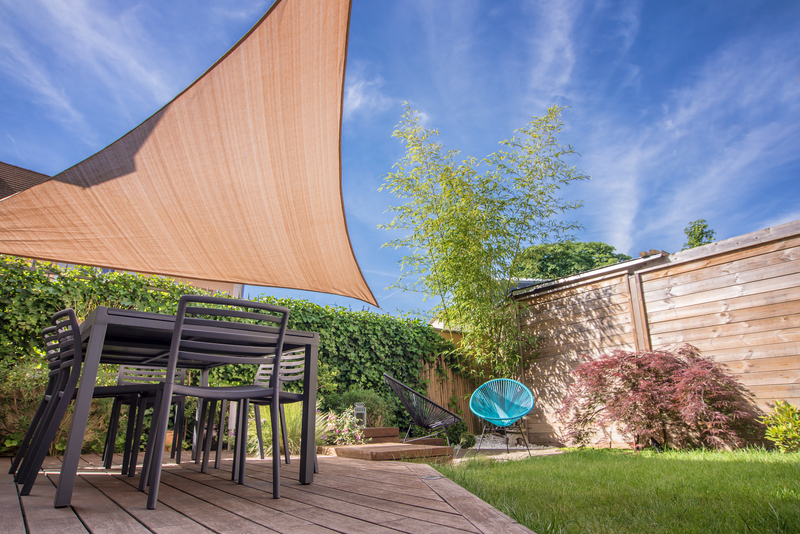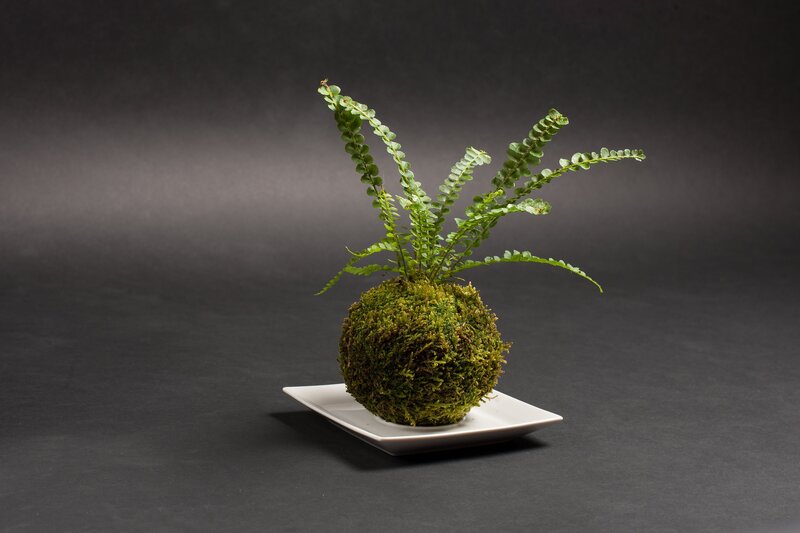Dog-Friendly Gardening: Creating a Pet-Safe Oasis
Posted on 24/05/2025
Dog-Friendly Gardening: Creating a Pet-Safe Oasis
Every dog lover dreams of a beautiful, flourishing garden where both pets and plants thrive harmoniously. Designing a dog-friendly garden goes beyond aesthetics; it's about ensuring that your outdoor sanctuary is equally safe and enjoyable for your furry friends. In this guide, we'll explore everything you need to know to create a pet-safe oasis that balances playful pups and thriving plants, offering practical tips, top choices for dog-safe plants, and advice on training your canine companion to respect your backyard paradise.
Why Prioritize a Dog-Safe Garden?
- Pet Health and Safety: Many common garden plants and chemicals are hazardous to dogs. A well-designed, dog-friendly garden prevents accidental poisoning and injuries.
- Reduced Stress for Owners: When your garden is tailored to your dog's needs, you'll have peace of mind knowing your best friend is safe, happy, and stimulated outdoors.
- Encourages Natural Behavior: A pet-safe garden allows dogs to fulfill their instincts--running, sniffing, digging, and relaxing in the sun--without destructive consequences.

Assessing Your Current Garden for Hazards
Before transforming your garden into a dog-safe oasis, inspect every corner for hidden threats. Here are steps to get started:
Identify Toxic Plants
- Common Culprits: Azalea, oleander, sago palm, foxglove, and lilies are particularly dangerous to dogs. Remove or replace any toxic flora.
- Check Plant Labels: When in doubt, consult the ASPCA's extensive list of toxic and non-toxic plants for dogs.
Review Hardscaping and Mulches
- Cocoa Mulch: Contains theobromine, toxic to dogs--opt instead for pine, cedar, or shredded hardwood mulches.
- Sharp Edges: Broken pots, loose stones, or thorny borders can cut or injure your dog; choose rounded, smooth materials when possible.
Avoid Chemical Hazards
- Pesticides/Fertilizers: Select pet-friendly gardening products--those labeled organic or "safe for pets."
- Compost: Avoid allowing your dog access to compost, where mold and food scraps can cause illness.
Designing Your Dog-Friendly Gardening Oasis
Understand Your Dog's Needs and Habits
Each dog is unique. Observing your canine's preferences--do they love to dig, chase, sunbathe, or simply patrol the borders?--will help you create a garden layout that matches their lifestyle.
- Active Dogs: Need space for running and playing.
- Older or Tiny Dogs: Require level paths and shaded resting spots.
- Diggers: Could benefit from a designated digging pit.
Pathways and Play Zones
- Sturdy Paths: Create pathways with smooth stones, decomposed granite, or mulch, so dogs can patrol without trampling delicate beds.
- Open Spaces: Leave lawn or mulch-covered areas for games of fetch.
- Training Cues: Use edging--a low stone wall or dense shrubs--to define boundaries and keep dogs out of flower beds.
Shade and Water Access
Dogs need places to relax, especially during hot weather. Provide shade with trees, pergolas, or doghouses. A decorative fountain or shallow, dog-safe pond lets pups cool off and drink as needed.
Safe Boundaries and Fencing
- Secure Enclosures: Check for escape routes under/over fences. Use sturdy materials like wood, vinyl, or metal; avoid gaps and sharp wires.
- Dog Windows: Install a "peep window" in solid fencing so curious dogs can see beyond without digging or barking excessively.
Choosing Pet-Safe Plants for Your Dog-Friendly Garden
Selecting the right plants is the heart of creating a dog-friendly gardening retreat. Pick hardy, non-toxic species that can withstand some wear and stand up to canine curiosity.
Top Dog-Safe Plants
- Herbs: Basil, thyme, sage, parsley, and rosemary are safe, aromatic, and useful for cooking.
- Flowers: Marigolds, sunflowers, snapdragons, violets, zinnias, and camellias add color without risk.
- Groundcovers: Irish moss, creeping thyme, and elfin thyme tolerate foot traffic and stay low.
- Shrubs: Roses (without pesticides), bottlebrush, and hibiscus provide structure and blooms.
- Grasses: Bamboo, blue fescue, and fountain grass add texture and movement.
Plants to Avoid
- Bulbs: Tulips, daffodils, and hyacinths can be toxic if ingested.
- Houseplants Outdoors: Some favorites, like dieffenbachia and philodendron, are unsafe for pets in outdoor beds.
- Certain Shrubs: Azaleas, oleander, and yew are best left out of any dog's domain.
Using Raised Beds and Containers
Raised beds and large containers elevate delicate or well-loved plants, protecting them from rough play and digging paws. Arrange container gardens at different heights and use heavy pots to prevent tipping.
Dog-Proofing Your Garden Features
Mulch and Ground Covers
- Pine or Cedar Mulch: Safe alternatives to cocoa mulch and easy on a dog's paws.
- Artificial Turf: Great for small areas and ultra-tough lawns where grass struggles to survive.
- Pea Gravel: A good option for drainage and cleanability in dog runs and high-traffic patches.
Compost, Tools, and Garden Chemicals
- Dog-Proof Compost Bins: Use bins with tight-fitting lids to prevent scavenging through decomposing food.
- Safe Storage: Store garden chemicals in high cabinets, and never apply pesticides or herbicides where your dog plays.
- Pet-Safe Fertilizers: Opt for organic, naturally-sourced fertilizer products, and follow all application guidelines.
Preventing Escapes and Digging
- Bury Fencing: Secure fencing edges two feet underground, or install chicken wire to discourage digging.
- Digging Zones: Allocate one garden spot as a "dig pit," filling it with soft soil and toys to direct digging instincts in a safe way.
Creating Enrichment for Your Dog in the Garden
Sensory Experiences
Dogs perceive the world through their noses. Planting strong-scented herbs or fragrant flowers (like lavender or rosemary) offers a sensory playground for burst of sniffing satisfaction. Wind chimes, bubbling water, and rustling grasses stimulate their curiosity as well.
Dog Toys and Agility Features
- Tunnels and Hurdles: Incorporate lightweight, dog-safe agility equipment for exercise and fun.
- Scatter Toys: Durable chew toys, balls, and rope toys give pups positive outlets for energy.
- Sandboxes: Hide treats and toys in a designated digging zone so your dog always has something to discover.
Training Your Dog in Your Pet-Safe Garden
Even the most thoughtfully designed yard requires guidance to help your furry companion understand where they're allowed to play and relax.
Establish Boundaries
- Visual Cues: Use low fencing, defined pathways, and purposely placed rocks or logs to signal off-limits areas.
- Positive Reinforcement: Reward your dog when they remain on trails or within play zones, using treats or happy praise.
Discourage Unwanted Behavior
- Redirect Digging: When caught, move your dog gently to their digging box and encourage them there.
- Block Access to Danger Areas: Consider temporary barriers until boundaries are learned.
Seasonal Considerations in Dog-Safe Gardening
The needs of your dog-friendly garden evolve through the year. Here are a few seasonal tips for keeping your pet oasis healthy and safe:
Spring and Summer
- Shade: Ensure there is plenty of shelter and fresh water to avoid overheating.
- Planting: Avoid newly fertilized or mulched areas until the chemicals are fully integrated and safe.
- Pest Control: Use only pet-safe flea and tick control methods in and around your garden.
Autumn
- Leaf Piles: Check for hidden mold or sharp objects before allowing your dog to jump in.
- Bulb Planting: Keep dogs away from newly planted bulbs, which may be toxic.
Winter
- Antifreeze: Keep all antifreeze products far from garden edges, as they can be fatal if ingested.
- Salt and De-icers: Choose pet-safe versions to avoid irritation or paw damage.

Benefits of a Dog-Friendly Backyard Sanctuary
- Bonding: A pet-safe oasis lets you spend more quality time with your dog outdoors.
- Physical Health: Dogs get exercise and fresh air, which supports joint, heart, and mental well-being.
- Mental Enrichment: Exploring, sniffing, and playing in a stimulating garden environment curbs boredom and problem behaviors.
- Garden Beauty: Thoughtful design enhances the look and functionality of your outdoor space, for both pets and people.
Conclusion: Building Your Own Dog-Friendly Garden Oasis
With a little planning and creativity, your garden can be transformed into a true paradise for both you and your dog. By choosing safe plants, preventing hazards, and creating enriching spaces, you will foster a healthier, happier lifestyle for your four-legged friend and yourself. Remember, the best dog-friendly gardens are ones that grow with your pet, adapting to their needs through every season of life.
Ready to start your own pet-safe, dog-friendly gardening project? Plan your layout, pick your plants, and invite your furry companion to dig, play, and relax in the ultimate backyard oasis.

